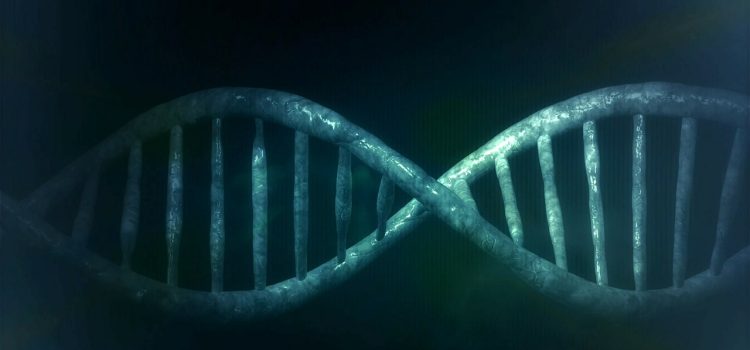
The story of Rosalind Franklin’s contribution to the discovery of DNA is a real-life mystery that has fascinated scientists and curious minds alike for decades. Her groundbreaking research on the structure of DNA laid the foundation for one of the most significant scientific achievements in history, but her role in this discovery was long overshadowed by her male colleagues. In this blog post, we will unravel the intriguing story behind Rosalind Franklin’s work on DNA and shed light on her invaluable contributions to science. Get ready to be inspired!
What was Rosalind Franklin working on when she died in 1958?
Rosalind Franklin was a brilliant and tenacious scientist who dedicated her life to unraveling the mysteries of nature. When she died in 1958, she was working on several groundbreaking projects, including research into the structure of viruses and the chemical composition of coal.
However, it was her work on DNA that would ultimately make her famous. In the early 1950s, Franklin began using X-ray crystallography to study the structure of DNA molecules. Her technique involved shooting X-rays through crystallized DNA samples and analyzing how they diffracted to create an image of their atomic arrangement.
Franklin’s meticulous approach and attention to detail allowed her to produce high-quality images that revealed key insights into what would later be known as the double helix structure of DNA. Despite facing numerous challenges along the way, including sexism and political infighting among colleagues at King’s College London where she worked, Franklin remained focused on advancing scientific knowledge.
Sadly, Rosalind Franklin passed away from ovarian cancer before she could see firsthand how important her work had been in unlocking one of science’s greatest secrets: the blueprint for life itself. Nevertheless, her legacy lives on as a testament to perseverance and dedication in pursuit of knowledge.
How did her work on DNA discovery lead to one of the most famous scientific discoveries in history?
Rosalind Franklin’s work on DNA discovery was crucial in unraveling the mystery of the structure of DNA. Using X-ray crystallography, she captured images that revealed the double helix shape of DNA, which provided vital information to other scientists who were also working on understanding this complex molecule.
One scientist who benefited from Franklin’s work was James Watson. He and his colleague Francis Crick used her data as a key piece in their model for the structure of DNA. Without Rosalind Franklin’s contribution, they may not have been able to put together such an accurate picture.
While Watson and Crick went on to receive much recognition for their discovery, it is important to acknowledge Rosalind Franklin’s critical role in advancing our understanding of genetics. Her meticulous research paved the way for one of the most groundbreaking scientific discoveries in history.
Rosalind Franklin sadly passed away before Watson and Crick published their findings, so she never received proper credit during her lifetime. However, her legacy lives on as a trailblazer for women in science and an inspiration for all those striving to push boundaries and uncover new knowledge about our world.
What happened to the sample of DNA that she worked with?
Rosalind Franklin’s DNA work was groundbreaking, yet it may surprise you to learn that the sample of DNA she worked with has an interesting story too. After her death in 1958, the sample remained at King’s College London, where she had conducted her research. However, by the early 1990s, there was no record of its whereabouts.
Some speculated that it had been destroyed or lost over time. But then in 2014, a member of staff at King’s College discovered an unlabeled cardboard box containing Franklin’s original samples! It turns out they were hidden away and forgotten about for many years.
The discovery caused quite a stir among researchers and historians alike. The samples represent crucial evidence of Rosalind Franklin’s contribution to DNA research and paved the way for future discoveries in this field. Today, they serve as a testament to her legacy and inspire new generations to pursue scientific breakthroughs.
What are the possible implications of her work?
Rosalind Franklin’s work on the structure of DNA has had far-reaching implications in numerous fields. Her discovery paved the way for a better understanding of genetics, which has led to advancements in medicine and biotechnology. Here are some possible implications of her work:
1. Medical Research: Understanding the molecular structure of DNA allowed scientists to study various genetic disorders with greater accuracy, such as cystic fibrosis, sickle cell anemia and Huntington’s disease.
2. Biotechnology: The discovery of the double helix structure enabled researchers to manipulate genes and develop new technologies like gene therapy.
3. Agriculture: Studying plant genetics through Rosalind Franklin’s discoveries can lead to more efficient crop production that is resistant to pests or environmental conditions.
4. Forensics: With a deeper knowledge of DNA structures and their variations between individuals, forensic scientists have been able to solve crimes with unprecedented accuracy.
5.
Environmental Studies : Rosalind Franklin’s research also contributed significantly towards understanding bacterial transformation as well as introduced mechanisms involved in photosynthesis.
Rosalind Franklin’s contribution was monumental not only for scientific advancement but also for inspiring many young girls worldwide who aspire now even more than ever before today!
How can her story be inspiring for future generations?
Rosalind Franklin’s story is a testament to the power of persistence, hard work, and dedication. Despite facing numerous obstacles as a woman in the male-dominated field of science, she remained focused on her research and made significant contributions to the understanding of DNA structure.
Her legacy serves as an inspiration for future generations, particularly young women pursuing careers in STEM fields. Her determination and commitment to her work serve as a reminder that success is achievable with perseverance and passion.
Franklin’s story also demonstrates the importance of collaboration in scientific discovery. While she may not have received full credit for her contributions during her lifetime, her work paved the way for one of history’s most groundbreaking discoveries.
Moreover, Franklin’s example highlights the need for ethical conduct in science. She maintained high standards throughout her research despite facing intense competition from colleagues who were willing to compromise their integrity in pursuit of fame or recognition.
Rosalind Franklin’s life story offers valuable lessons about resilience, collaboration, and ethics that can inspire future generations to pursue their own passions with courage and determination.
Conclusion
Rosalind Franklin’s contribution to the discovery of DNA has been a fascinating and intriguing mystery for many years. Her work with X-ray crystallography provided crucial insights into the structure of DNA that were essential to unlocking its secrets.
Despite facing numerous challenges and obstacles during her career, including sexism and discrimination in the scientific community, Franklin remained committed to her research and dedicated herself to advancing our understanding of this fundamental molecule.
Today, we continue to build on Franklin’s legacy by exploring new frontiers in genetics and genomics. Thanks to her pioneering work, we have a deeper appreciation for the complexity and beauty of life at its most fundamental level.
As we reflect on Rosalind Franklin’s story, let us be inspired by her courage, tenacity, and passion for science. Let us honor her memory by continuing to push the boundaries of human knowledge and striving towards a better understanding of ourselves and our world.










